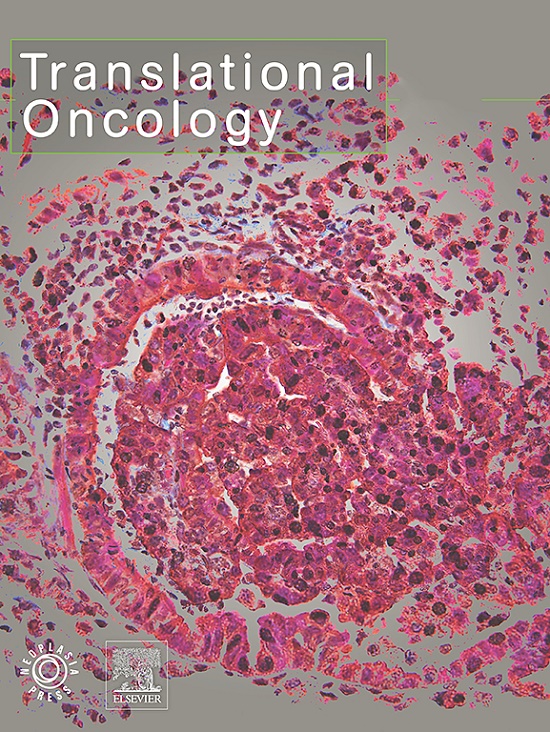A practical distribution pattern of α-SMA-positive carcinoma associated fibroblasts indicates poor prognosis of patients with pancreatic ductal adenocarcinoma
IF 5
2区 医学
Q2 Medicine
引用次数: 0
Abstract
Purpose The present study aimed to clarify the distribution pattern of carcinoma associated fibroblasts (CAFs) across pancreatic ductal adenocarcinoma (PDAC) and its prognostic prediction value.
Methods Data of two cohorts were retrospectively collected from consecutive patients who underwent primary pancreatic resection from January 2015 to December 2017. We used tumor specimens to screen out the most suitable markers for the spatial distribution analysis for CAFs subpopulations. We utilized a tissue microarray to assess the spatial intensity of α-SMA expression within the tumor microenvironment. Specifically, we classified CAFs into two types based on their α-SMA spatial expression. Type II CAFs were designated as those located in the juxtatumoural stroma with α-SMA expression that was moderate or higher, and those in the peripheral stroma with α-SMA expression that was less than moderate. All other cases, where the α-SMA expression did not meet these criteria, were categorized as Type I CAFs. Multivariable Cox proportional hazards regression was used to assess risk factors associated with patient outcomes. RNA sequencing data were obtained from bulk tumor samples and isolated CAFs from patients to reveal the distinct pattern and elucidated their fundamental characteristics.
Results The α-SMA spatial intensity was the most suitable variable for representative of CAFs spatial characteristics. Patients with Type Ⅰ CAFs were more likely to be allocated into N1 or N2 of the N stage and Ⅱ and Ⅲ of the TNM stage. The spatial distribution pattern of CAFs (Type Ⅰ v.s. Type Ⅱ: HR, 1.568; 95 % CI, 1.053–2.334; P = 0.027) was an independent prognostic factor in the discovery cohort, so as in the validation (Type Ⅰ vs. Type Ⅱ: HR, 2.197; 95 % CI, 1.410–3.422; P = 0.001). RNA sequencing analysis revealed that the differentially expressed genes (DEGs) in Type I CAFs are closely associated with those in corresponding tumor tissues, highlighting the enhanced biological significance of immune-related and oncogenic invasive pathways.
Conclusions Our findings that two types of α-SMA-positive CAFs with different spatial patterns present heterogeneously across tissues of PDACs and correlated with patients’ outcomes. The spatial location of CAFs may facilitate patients’ selection in precision medicine of PDACs.
α- sma阳性癌相关成纤维细胞的实际分布模式提示胰腺导管腺癌患者预后不良。
目的探讨癌相关成纤维细胞(cancer associated fibroblasts, CAFs)在胰腺导管腺癌(pancreatic ductal adencarcinoma, PDAC)中的分布规律及其预后预测价值。方法回顾性收集2015年1月至2017年12月连续行原发性胰腺切除术患者的两组数据。我们使用肿瘤标本筛选出最合适的标记物用于CAFs亚群的空间分布分析。我们利用组织微阵列来评估肿瘤微环境中α-SMA表达的空间强度。具体来说,我们根据α-SMA的空间表达将CAFs分为两种类型。II型CAFs指位于瘤旁基质中α-SMA表达量中等及以上的CAFs,以及位于α-SMA表达量低于中等的周围基质中的CAFs。所有其他α-SMA表达不符合这些标准的病例被归类为I型CAFs。采用多变量Cox比例风险回归评估与患者预后相关的危险因素。从大量肿瘤样本和患者分离的CAFs中获得RNA测序数据,以揭示其独特的模式并阐明其基本特征。结果α-SMA空间强度是最适合代表CAFs空间特征的变量。Ⅰ型CAFs患者更容易被分配到N期的N1或N2和TNM期的Ⅱ和Ⅲ。CAFs的空间分布格局(Ⅰ型vs .Ⅱ型:HR, 1.568;95% ci, 1.053-2.334;P = 0.027)在发现队列中是一个独立的预后因素,在验证队列中也是如此(Ⅰ型vs.Ⅱ型:HR, 2.197;95% ci, 1.410-3.422;P = 0.001)。RNA测序分析显示,I型CAFs中的差异表达基因(DEGs)与相应肿瘤组织中的差异表达基因(DEGs)密切相关,凸显了免疫相关和致癌侵袭途径的生物学意义增强。结论两种不同空间分布的α- sma阳性CAFs在pdac组织中存在异质性,并与患者预后相关。CAFs的空间位置有助于患者在精准医疗中对其进行选择。
本文章由计算机程序翻译,如有差异,请以英文原文为准。
求助全文
约1分钟内获得全文
求助全文
来源期刊

Translational Oncology
ONCOLOGY-
CiteScore
8.40
自引率
2.00%
发文量
314
审稿时长
54 days
期刊介绍:
Translational Oncology publishes the results of novel research investigations which bridge the laboratory and clinical settings including risk assessment, cellular and molecular characterization, prevention, detection, diagnosis and treatment of human cancers with the overall goal of improving the clinical care of oncology patients. Translational Oncology will publish laboratory studies of novel therapeutic interventions as well as clinical trials which evaluate new treatment paradigms for cancer. Peer reviewed manuscript types include Original Reports, Reviews and Editorials.
 求助内容:
求助内容: 应助结果提醒方式:
应助结果提醒方式:


